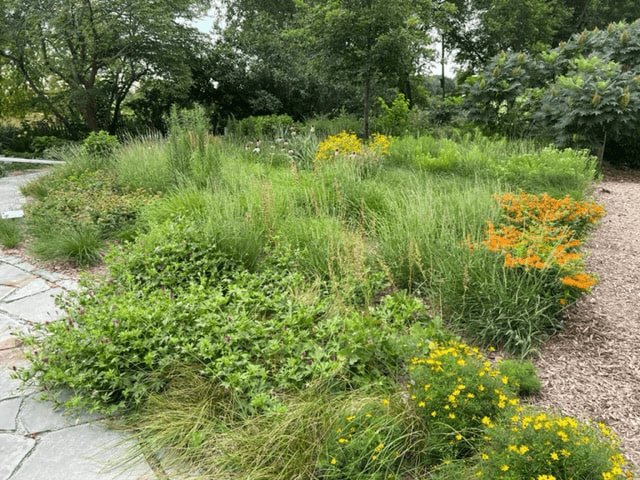
On Home Affordability, Poverty, and Unlawning America
I don’t know who that Michael Green financial analyst guy is who looked at one county in NJ to state
When you disturb a site — plant a new garden — you WILL have weeds. These weeds are usually annuals, but they can get pretty thick in certain circumstances (especially in seeding projects where it takes longer for plants to mature, and where germination isn’t always guaranteed if dependent on timely rains).
It’s important to rethink weed management in gardens the first 1-2 years. For example, hand pulling every last intruder is both impractical and problematic; for the latter this means every time you pull a weed you create more soil disturbance, bring up more weeds seeds to germinate, and potentially exacerbate the issue.
In a sown meadow space, some folks recommend keeping the area mowed at about 6-12 inches the first year to reduce weed seed germination. I’ve worked on projects where this was helpful AND detrimental. Why detrimental? The space was sowed at such a high rate (over 200 seeds per foot) and using a healthy dose of biennials and annuals, that letting those early-succession species take off provided superior weed control — even though we still had plenty of weeds. Luckily, it’s harder for most to tell what is a weed and what isn’t when there are so many flowers in bloom early on.
When there are more manicured / intentionally planted beds using potted material, there are some traditional strategies to reduce weed competition in years 1-2, such as a thin mulch layer (we recommend just 1-2 inches so there are / will soon be more soil gaps to allow desirable plants to self sow and fill in, thus creating a living green mulch sooner while fighting weeds sooner). Some pros try a pre-emergent, granular herbicide, especially for spring plantings. But the best strategy you can take is plant density — planting at 12 inches apart or less — and deadheading problematic weeds. The goal is always to cover the site ASAP and not allow invasive weeds — like musk thistle — to get a foothold, and that’s where deadheading really helps.
If you’re planting into a known weedy site — especially one with aggressive species like creeping charlie — it might be a good idea to prep the area for an entire growing season before planting. If you solarize, this means a 4 weeks on / 2 weeks off with the plastic (kill plants, let new weeds germinate, kill, repeat), or similar treatment with glyphosate (let weeds grow to 4-6″ then kill a few times — each time it will be less and less). Using cardboard may not be always be practical if you have large areas or are seeding.
It has been one heckuva year for weeds in 2023. A super dry winter and spring AND early summer, followed by much rain in July. This produced a bumper crop of weeds and later in the season. Luckily — and as is most typical — the weed pressure has been mostly from annuals such as crabgrass and foxtail, both of which are almost always out competed by desired plants within 1-2 years as those annual seeds need light to germinate (and often won’t get it if shaded by warm season bunchgrasses and forbs if planted densely in layers).
Unfortunately, we never know what’s in the weed seed bank when we prep a site by killing lawn — and spray-killing lawn is preferred vs. sod cutting or tilling, because more site disturbance = more weeds by the truckload. Each space is unique, with unique hydrology and weather and even microclimates. It’s been a very surprising year with plenty of hiccups in our landscapes, but patience and staying the course is critical. When we are ready to give up that’s usually just about the point when the corner is being turned.
Remember, a weed is an undesirable plant in a place we don’t want it. And weeds thrive where there’s an opportunity — open gaps with little competition. Nature abhors a vacuum. In a new garden — whether planted or sown — desirable and necessary plant competition may be 1-3 years away. Patience is critical as the ecosystem rebalances and heals itself from a long history of colonization.


I don’t know who that Michael Green financial analyst guy is who looked at one county in NJ to state

Oh that’s a cool plant, stiff goldenrod, Oligoneuron rigidum. I wonder if that would work in my garden. Maybe it’s
